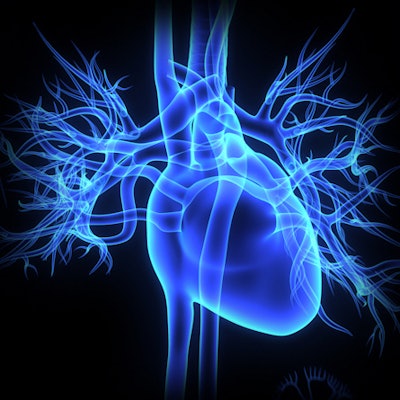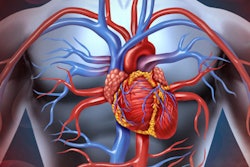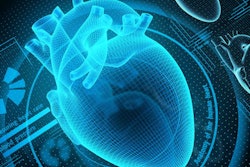
A clinical algorithm that combines echocardiography with measurement of tissue strain can help diagnose cardiac dysfunction after cancer treatment more accurately in women with early-stage breast cancer, according to research published February 9 in JAMA Cardiology.
A team led by Dr. Maryam Esmaeilzadeh from Toronto General Hospital in Canada said that while further validation is needed, its clinical algorithm could lead to more objective decision-making when it comes to closer monitoring, cardiac therapy, or continued routine monitoring.
"Our study showed that when we combined echocardiography 3D-left ventricular ejection fraction [LVEF], global longitudinal strain, and global circumferential strain, we can better identify patients with respect to their probability of having current cardiotoxicity," corresponding author Dr. Paaladinesh Thavendiranathan told AuntMinnie.com.
Clinicians typically identify cancer therapy-related cardiac dysfunction by LVEF surveillance, which is then measured by cardiovascular MRI. However, researchers said its routine use for repeated monitoring is "not feasible."
3D echocardiographic LVEF has shown promise in monitoring dysfunction, while global longitudinal and circumferential strains, troponin, and natriuretic peptides can help measure future risk.
"Although future risk is important, diagnosing current cancer therapy-related cardiac dysfunction still remains a challenge, and late diagnosis can result in poor outcomes," the researchers wrote.
Esmaeilzadeh et al wanted to measure the accuracy of their clinical algorithm combining echocardiography and serum biomarkers for diagnosing such dysfunction, with cardiovascular MRI as the reference standard. They also compared the results to individual measures.
They used the algorithm to measure outcomes in 136 women with an average age of 51.1 years. The women underwent therapy for HER2+ breast cancer between 2013 and January 2019. They were scheduled to receive sequential anthracycline and trastuzumab therapy with or without adjuvant radiotherapy.
The study authors found that the algorithm combining 3D LVEF, global longitudinal strain, and global circumferential strain measures was best for diagnosing dysfunction, with an area under the receiver operating characteristic (AUC) of 0.893. They also wrote that the probability of dysfunction when results for all three tests were negative was 1.0%.
When the model replaced 3D LVEF with 2D LVEF, the algorithm still performed comparably well, Esmaeilzadeh and colleagues added.
Cardiac dysfunction identified by cardiovascular MRI occurred in 37 women. Out of the total number of women with analyzable images, 30 of 131 dysfunction cases were identified by 2D LVEF. 3D LVEF, meanwhile, identified 27 of 124 cases, global longitudinal strain identified 53 of 126, and global circumferential strain identified 61 of 123 cases.
"For patients, when all three measures are normal or at least both LVEF and global longitudinal strain are normal and have not changed compared to their pre-cancer therapy measurement, they can be confident that their heart is remaining healthy and not impacted by the cancer therapy," Thavendiranathan said.
He also said doctors can be confident in a patient's heart health during cancer therapy and continue therapy uninterrupted.
Thavendiranathan also told AuntMinnie.com that the team is working on risk prediction models that identify the current risk of cardiotoxicity, as well as a patient's future risk of cardiotoxicity. This will use artificial intelligence-based approaches in addition to novel traditional statistical approaches.



.fFmgij6Hin.png?auto=compress%2Cformat&fit=crop&h=100&q=70&w=100)





.fFmgij6Hin.png?auto=compress%2Cformat&fit=crop&h=167&q=70&w=250)











